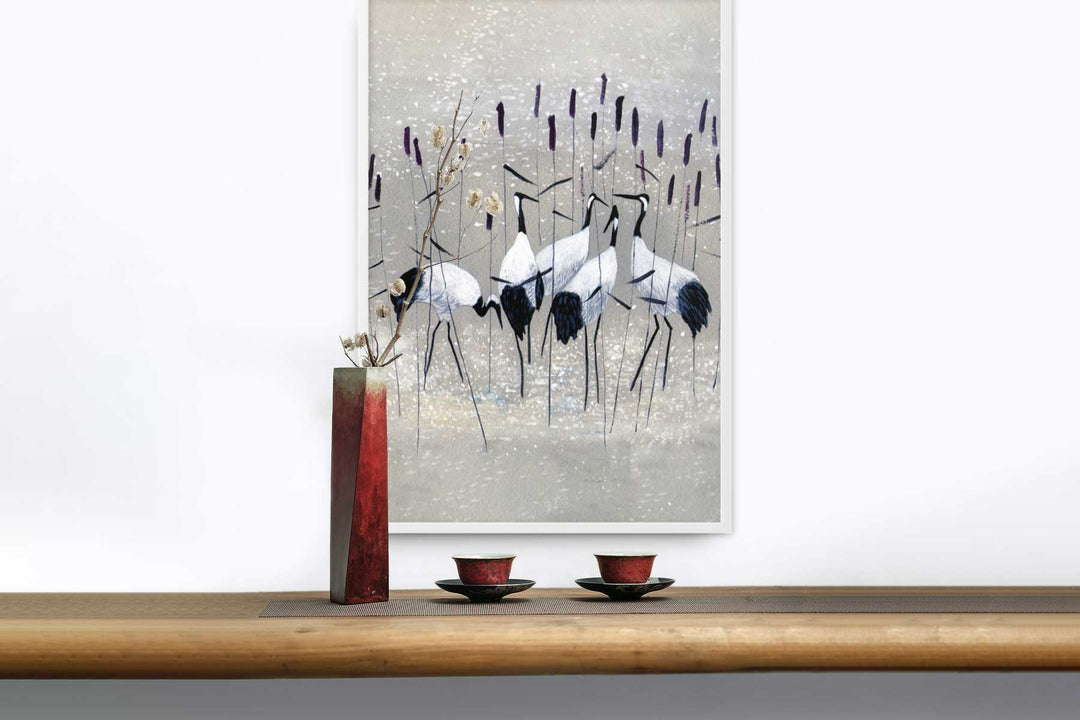Piet Mondrian's "Composition with Red Yellow Black Gray and Blue": An In-Depth Analysis of Abstract Mastery
A luminary of the abstract art movement, Piet Mondrian stands in the annals of art history as a beacon of innovation and creativity. His seminal work " Composition with Red, Yellow, Black, Grey and Blue " serves as the cornerstone of his oeuvre and encompasses his philosophical reflections and artistic brilliance. In this comprehensive exploration, we embark on a journey through Mondrian's life, delving into the fine details of his iconic painting, analyzing its historical context, and examining its profound influence on the development of modern art.
Artistic background
Born in Amersfoort, Netherlands, in 1872, Piet Mondrian's artistic journey unfolded against the backdrop of a rapidly changing world. Influenced by theosophy and the principles of spiritual harmony, Mondrian's early works reflected a fascination with nature and the spiritual sphere. However, it was his encounter with Cubism and the works of Picasso and Braque that sparked his passion for abstraction. In the spirit of the early 20th century avant-garde, Mondrian began a quest to distill reality into its purest form, rejecting representationalism in favor of geometric abstractions.

🎨 Oil on canvas, 1921, 59 x 59 cm, Gemeentemuseum, The Hague
🎨 Reprint at artlia: Composition with red, yellow, black, grey and blue
Analysis of the painting
" Composition with Red Yellow Black Grey and Blue ", painted in 1921, stands as a testament to Mondrian's neoplastic philosophy. At first glance, the painting presents a grid of intersecting horizontal and vertical lines that form a series of squares and rectangles. Within this geometric framework, Mondrian uses blocks of primary colors - red, yellow and blue - interspersed with areas of black and grey. The composition exudes a sense of balance, rhythm and harmony, inviting the viewer into a world of visual equilibrium.
Mondrian's meticulous attention to detail is evident in every brushstroke, with each color and line carefully calibrated to achieve perfect harmony. The juxtaposition of vibrant colors against neutral tones creates a dynamic interplay of light and shadow, infusing the composition with a sense of movement and energy. Despite its apparent simplicity, "Composition with Red Yellow Black Gray and Blue" is a study in complexity, challenging the viewer to unravel its layers of meaning and significance.
Historical context
To fully appreciate Mondrian's " Composition with Red, Yellow, Black, Grey and Blue ," one must consider it in the context of the tumultuous landscape of early 20th century Europe. As industrialization and urbanization swept the continent, traditional forms of expression were challenged, leading to a wave of artistic experimentation and innovation. In the aftermath of World War I, artists like Mondrian sought to create a new visual language that transcended national boundaries and cultural differences and reflected the universal aspirations of humanity.
The De Stijl movement, founded by Mondrian and Theo van Doesburg in 1917, emerged as a response to the chaos and fragmentation of the modern world. Inspired by the principles of simplicity, harmony and order, the movement sought a new aesthetic expression that reflected the underlying unity of all things. "Composition with Red Yellow Black Gray and Blue" embodies these ideals and serves as a visual manifesto of the De Stijl movement and its pursuit of artistic purity.
Influence and Legacy
The impact of Mondrian's " Composition with Red Yellow Black Grey and Blue " extends far beyond the boundaries of the art world, permeating every aspect of modern life. His bold exploration of colour and form has inspired generations of artists, designers and architects, leaving an indelible mark on the visual landscape of the 20th century and beyond. From the clean lines of Bauhaus architecture to the vibrant colours of Pop Art, Mondrian's influence can be seen in a wide range of artistic movements and styles.
In the realm of fashion, Mondrian's signature grid pattern has become synonymous with modernity and sophistication, adorning everything from haute couture dresses to everyday accessories. His minimalist aesthetic continues to appeal to contemporary audiences today, reflecting a timeless appeal that transcends cultural and temporal boundaries. Mondrian's legacy stands as a testament to the enduring power of abstract art to stimulate thought, awaken emotions and inspire change.

🎨 Oil on canvas, 1921, 59 x 59 cm, Gemeentemuseum, The Hague
🎨 Reprint at artlia: Composition with red, yellow, black, grey and blue
Conclusion
As we conclude our exploration of Piet Mondrian's "Composition with Red Yellow Black Gray and Blue," we are left with a deep understanding of the artist's visionary genius and his enduring legacy. Through his innovative use of geometric shapes and primary colors, Mondrian invites us to reflect on the essence of reality and the interconnectedness of the universe. As we continue to unravel the mysteries of his iconic painting, we are reminded of the transformative power of art to transcend the boundaries of time and space and leave an indelible mark on the human soul. In the words of Mondrian himself: "The artist's position is humble. He is essentially a channel." And indeed, Mondrian's "Composition with Red Yellow Black Gray and Blue" stands as a testament to the timeless beauty and universal truth of abstract art.
















